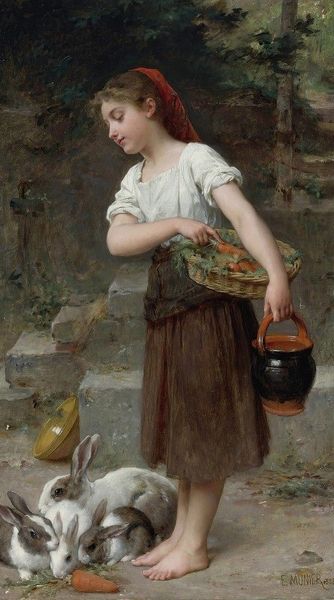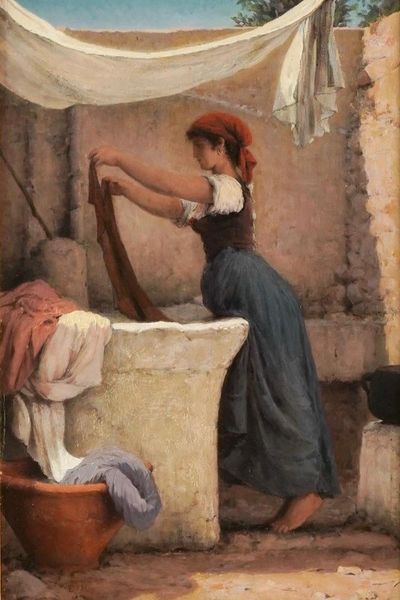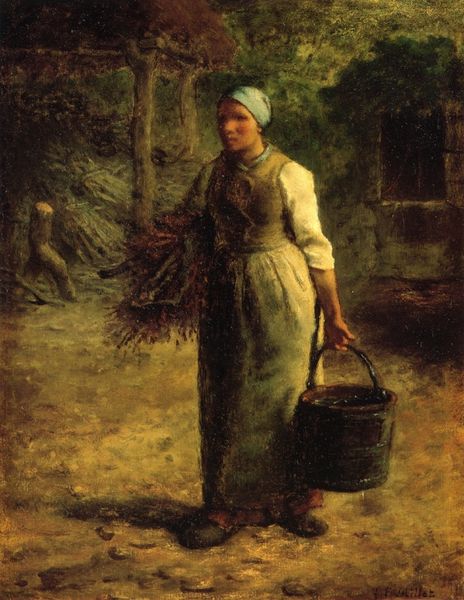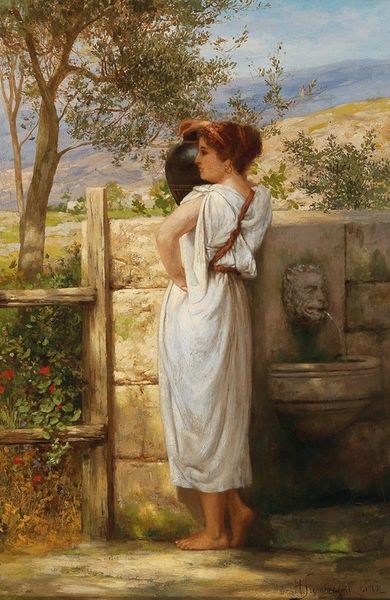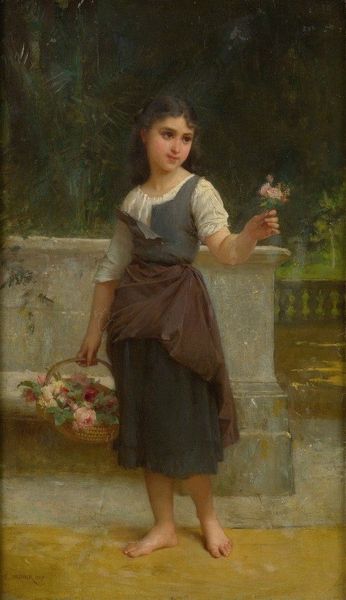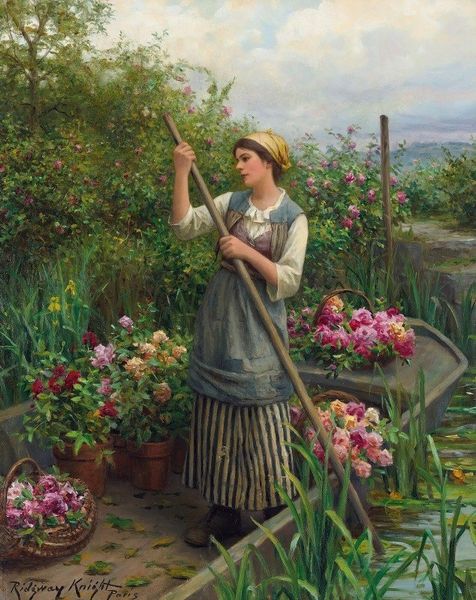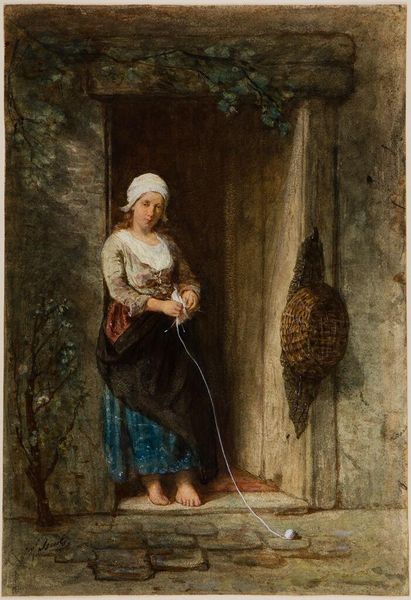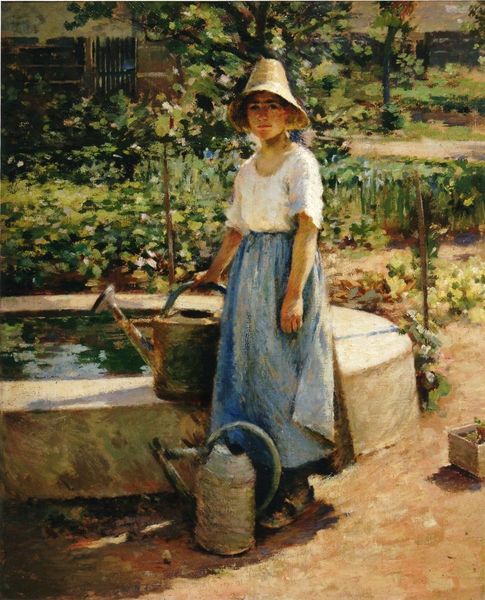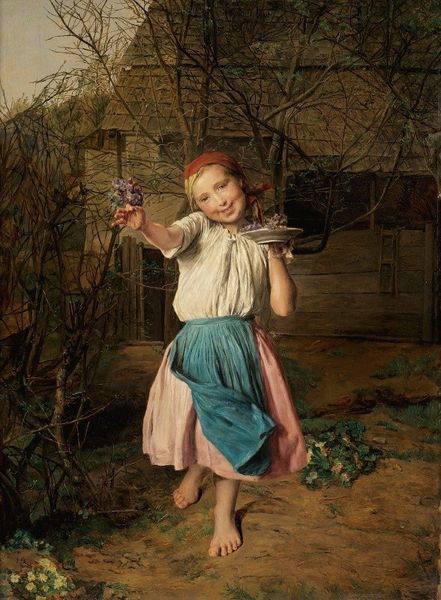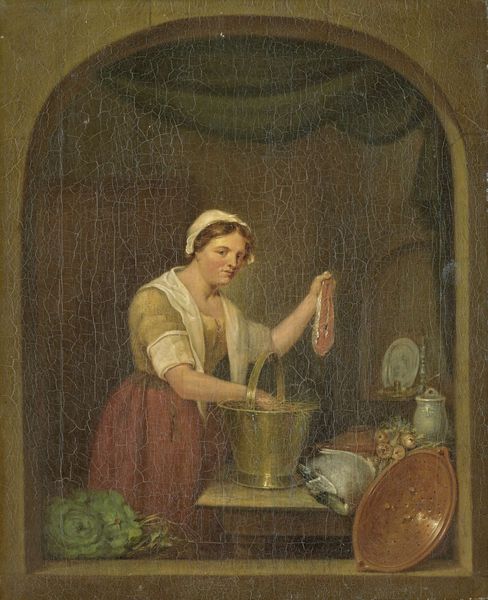
Dimensions: 43 x 32 cm
Copyright: Public domain
Curator: This piece by Alexandre Antigna, crafted in 1877, is entitled "Young Girl at the Fountain". He used oil paint to create a scene that’s both intimate and picturesque. The subject of a young woman playfully interacts with a water fountain in nature. Editor: My initial thought? A quiet moment captured in the humblest way, you know? The barefoot girl...it's as if we stumbled upon her secret place. The painting style itself is almost like a hushed tone, muted but clear. Curator: That barefoot detail speaks volumes. Antigna was interested in representing rural life, and everyday existence beyond the city limits. She isn’t posed like a lady in the salon; rather, the painting places her as someone deeply connected to the earth, perhaps gathering water for her home. This reminds me of Millet's *Gleaners* paintings of rural field workers in France, where workers are given the scale of heroes. Editor: Right. I love that he includes these slightly unkempt weeds clinging to the stone fountain...Nature always finds a way, doesn’t it? And she's right there in the mix, becoming one with nature. Do you suppose there's a commentary about female virtue being intertwined with natural purity here? Because those symbols abound in Western Art in 1877. Curator: Absolutely. Considering the period, that’s a likely reading. The fountain itself is ancient. The setting itself is a narrative about endurance and sustenance, reflecting romanticized views of the countryside. Fountains historically provided public access to fresh water but I find that this is a private and personal encounter. It might symbolize cleansing, or the constant flow of life. Antigna could have chosen many scenes, but he framed this one so specifically, and presented her interaction so directly, which allows it all to resonate more powerfully. Editor: So the "naturalness" here feels deliberately constructed... Antigna positions this scene in a longer socio-historical context of life, virtue, and connection. Thank you, I would have missed some of the deeper symbolic context there! Curator: That's what makes art history so compelling, isn't it? The image itself might invite nostalgia, but when we begin unpacking those layered contexts, we encounter so much more than meets the eye. Editor: Exactly! It’s the kind of work that lingers, a soft echo in the chambers of the mind. And that’s something worth pondering, really.
Comments
No comments
Be the first to comment and join the conversation on the ultimate creative platform.
